|
The Cultural Sites |
|||||||||
|
Agra Fort, Agra (1983)
Agra Fort represents the first major building project of Akbar, with remains of only a few buildings built by him which now survive. Built on the site of an earlier castle in AD 1565-1575, the fort, apart from other important units, contains Jahangiri Mahal, Khass Mahal, Diwan-i-Khass, Diwan-i-Am, Machchhi Bhawan and Moti Masjid. Many extant buildings were erected by Shah Jahan (AD 1630-1655). Of its four gates, the most impressive is the Delhi Gate on the west. |
|||||||||
|
_____________________________________________ Ajanta Caves (1983)
The world famous Ajanta Caves including the unfinished ones are thirty in number, of which five (9, 10, 19, 26 and 29) are chaitya-grihas and the rest are viharas (monasteries). After centuries of oblivion, these caves were discovered in AD 1819. They fall into two distinct phases with a break of nearly four centuries between them. All the caves of the earlier phase date between second century BC-AD. The caves of the second phase were excavated during the supremacy of the Vakatakas and Guptas. A few paintings, which survive on the walls of Caves 9 and 10date back to the second century BC-AD. The second group of the paintings started in about the fifth century AD and continued for the next two centuries as noticeable in later Caves. Caves 1, 2, 16 and 17 have remarkable paintings with themes intensely religious in tone and centre around Buddha, Bodhisattvas, incidents from the life of Buddha and the jatakas. The paintings are executed on a ground of mud-plaster in the tempera technique. |
|||||||||
|
_____________________________________________ Ellora Caves (1983) The magnificent group of rock-cut shrines of Ellora, representing three different faiths, Buddhist, Brahmanical and Jaina were excavated during the period from fifth to the thirteenth century AD. The Buddhist Caves (1 to 12) were excavated between the fifth and the seventh centuries AD, when the Mahayana sects were flourishing in the region. Important in this group are Caves 5, 10 and 12. The Brahmanical Caves numbering 13 to 29 are mostly Saivite. Kailasa (Cave 16) is a remarkable example of rock-cut temples in India on account of its striking proportion, elaborate workmanship, architectural content and sculptural I ornamentation. There are two dhvaja-stambhas or pillars with flagstaff in the courtyard. The grand sculpture of Ravana attempting to lift mount Kailasa, the abode of Siva, with his full might is a landmark in Indian art. The Jaina Caves (30 to 34) are massive, well-proportioned, decorated and mark the last phase of the activity at Ellora |
|||||||||
|
Taj Mahal, Agra (1983)
Taj on the right bank of River Yamuna, about 1.5km from the Agra fort, was built to enshrine the remains of Arjumand Banu Begam entitled Mumtaj Mahal, the queen of the Mughal emperor Shah Jahan. lts construction commenced in AD 1631 and completed seventeen years later at an enormous cost and labour. The intricate carvings and inlay work in marble enhance the beauty of Taj in which the emperor was also buried by the side of his queen after his death. Unlike other Mughal garden tombs, the mausoleum is situated at the northern end of a large rectangular area with its central portion divided into a square garden. The Taj is entered through a majestic gateway in the centre of the southern side where there is a spacious quadrangle. The monument is considered to be an epitome of love and one of the most flawless architectural creations of the world. |
|||||||||
|
Mahabalipuram Group of Monuments (1984)
Mahabalipuram or Mamallapuram, the city of Mamalla, is named after the title of great Pallava ruler Narasimhavarman-I (AD 630-668). It was a sea-port during the time of Periplus (first century AD) and Ptolemy (AD 140) and many Indian colonists sailed to South-East Asia through this port town. While there is some evidence of architectural activity going back to the period of Mahendrayarman-I (AD 600-630), the father of Mamalla, most of the monuments like rock-cut rathas, sculptured scenes on open rocks like Arjuna's penance, the caves of Govardhanadhari and Mahishasuramardini, the Jala-Sayana Perumal temple (the sleeping Mahavishnu or Chakrin at the rear part of the Shore temple complex) are attributed to the period of Narasimhavarman-I Mamalla. The monolithic Dharmaraja, Arjuna and Draupadi rathas are square on plan, the Bhima and Ganesa rathas are rectangular and Sahadeva ratha apsidal. Though monolithic sculpturing, both cut-in and cut-out, continued even during later periods (Atiranachanda cave, Pidari rathas and Tigercave), the structural architecture was introduced on a grand scale by Pallava Rajasimha (AD 700728), culminating in erection of the world famous Shore temple. The later period witnessed a few additions during the late-Pallava and Chola times. The grandiose Vijayanagara phase here is represented by the Raja Gopurams and the Sthala-Sayana temple, juxtaposed to the carved boulder of Arjuna's penance. |
|||||||||
|
Sun Temple, Konark (1984)
Konark is the Kainapara of the Periplus (first century AD) - an important port of the Orissan coast. The most notable marvel is the stately Sun Temple, built in c. AD 1250, during the reign of the Eastern Ganga King Narasimhadeva-I (AD 1238-1264), to enshrine an image of Sun (Arka), the patron deity of the place. The entire complex was designed in the form of a huge chariot drawn by seven spirited horses on twelve pairs of exquisitely carved wheels. The sanctum symbolises the majestic stride of the Sun-god and marks the culmination of the Orissan architectural style. The walls of the temple contain superb carvings of divine, semi-divine, human and animal figures amidst floral and geometric ornamentations. The vivacious kanyas, dancers and musicians are remarkable for their sensuous modelling, pulsating with human emotions which are absorbed in a variety of gestures and rhythmic actions. Mighty simha-gajas welcome the visitor at the porches |
|||||||||
|
Group of Monuments at Hampi (1986)
The largest extant temple is that of Pampapati with magnificent entrance tower caused by Krishnadeva Raya. The Vitthala temple is an exellent example of Vijayanagara style. The monolithic statues of Lakshmi, Narasimha and Ganesa are massive and graceful. The Krishna temple, Pattabhirama temple, Hazara Ramachandra, Chandrasekhara temple and the Jaina temples are noteworthy. Some temples are flanked on either side by storeyed mandapas. The audience hall of the king, Zenana enclosure with a massive stone basement of the Queen's palace and an ornate pavilion ‘Lotus Mahal' are examples of secular architecture. The corner towers, Dhananayaka's enclosure (treasury), Mahanavami Dibba with sculptured panels, a variety of ponds, tanks, mandapas, elephant stables, pillared mandapas are awe-inspiring. |
|||||||||
|
Churches and Convents of Goa (1986) Velha Goa (Goa) is famous for the most spectacular group of churches and cathedrals built during the sixteenth and seventeenth centuries AD. These include Se Cathedral, Church and Convent of St. Francis of Assisi, Chapel of St. Catherine, Basilica of Bom Jesus, Church of the Lady of Rosary and Church of St. Augustine. The Church of St. Cajetan is modelled on the original design of St. Peter's Church in Rome. The Church of Bom Jesus with its facade is decorated with Ionic, Doric and Corinthian pilasters. The paintings in the churches were done on wooden borders and fixed between panels having floral designs as in the chapels housing the tomb of St. Xavier, the arches above the altars in the transept of the Se' Cathedral and in the nave on either side of the main altar in the Church of St. Francis of Assisi. There are delicately carved painted wooden statues besides a few in stone to adorn the altars, depicting mostly the saints, Mother Mary and Jesus on the cross. |
|||||||||
|
Fatehpur Sikri, Agra (1986) In honour of saint Shaikh Salim Chishti, the Mughal emperor Akbar, the great, founded a magnificent city on Sikri ridge. In 1571 he ordered the construction of buildings for his own use and asked the noblemen to built houses for themselves. Within a year, most of the work was finished and within the next few years, a well planned city with administrative, residential and religious buildings came into existence. The Jami Mosque was perhaps among the first buildings to come up. Its epigraph provides AH 979 (AD 1571-1572) as the date of its completion. The Buland Darwaza was added some five years later. Among other important buildings are the tomb of Shaikh Salim Chishti, the Naubat-or-Naqqar Khana (drum-house), Taksal (mint), Karkhanas (royal workshops), Khazana (treasury), Hakim's quarters, Diwan-i-Am (hall of public audience), house of Maryam also called Sunahra Makan (Golden House), palace of Jodha Bai, Birbal's house etc. |
|||||||||
|
Khajuraho Group of Monuments (1986)
Khajuraho, the ancient Kharjjuravahaka, was the principal seat of authority of the Chandella rulers who adorned it with numerous tanks, scores of lofty temples of sculptural grace and architectural splendour. The local tradition lists eighty-five temples but now only twenty-five are standing examples in various stages of preservation. But for Chausath-Yogini, Brahma and Mahadeva which are of granite, all the other temples are of fine grained sandstone, buff, pink or pale yellow in colour. The Lakshmana temple dedicated to Vishnu built byYasovarman (AD 954), is an ornate and evolved example. The Visvanatha, Parsvanatha and Vaidyanatha temples belong to the time of king Dhanga, the successor of Yasovarman. The Jagadambi and Chitragupta are noteworthy among the western group of temples. The largest and grandest temple of Khajuraho is the immortal Kandariya Mahadeva which is attributed to king Ganda (AD 1017-1029). The other examples that followed viz., Vamana, Adinatha, Javari, Chaturbhuj and Duladeo, are smaller but elaborately designed. The Khajuraho group of temples are noted for lofty terraces (jagati) and functionally effective plans. The sculptures of divine and semidivine being win universal admiration for their delicate modelling. Youthful female forms with their ravishing attire and ornaments also embrace the winsome grace and charm. |
|||||||||
|
Elephanta Caves (1987)
In fact, there are seven caves out of which the most important is the Mahesamurti cave. The main body of the cave, excluding the porticos on the three open sides and the back isle is 27 metres square and is supported by rows of six columns each. The gigantic figures of dvarapalas or doorkeepers here are very impressive. There are sculptured compartments in this cave with remarkable images of Ardhanarisvara, Kalyana-Sundara Siva, Ravana lifting Kailasa, Andhakari-murti (slaying of Andhaka demon) and Nataraja Siva. |
|||||||||
|
Great Living Chola Temples (1987, 2004) The celebrated Saiva temple, appropriately called Brihadisvara and Dakshinameru, is the grandest creation of the Chola emperor Rajaraja (AD 985-1012) at Thanjavur. It was inaugurated by the king himself in his 19th regnal year and named it after himself as Rajesvara Peruvudaiyar. Architecturally, it is the most ambitious structural temple built of granite. The temple is within a spacious inner prakara of 240.90 m long (east-west) and 122m broad (north-south), with a gopura at the east and three other ordinary torana entrances one at each lateral sides and the third at rear. The sikhara, a cupolic dome, is octagonal and rests on a single block of granite, a square of 7.8m weighing 80 tons. The majestic upapitha and adhishthana are common to all the axially placed entities like the ardha, maha and mukha-mandapas and linked to the main sanctum but approached through a north-south transept across the ardha-mandapa which is marked by lofty sopanas. The moulded plinth is extensively engraved with inscriptions by its royal builder who refers to his many endowments, pious acts and organisational events connected to the temple. The brihad-linga within the sanctum is 8.7m high. Life-size iconographic representations on the wall niches and inner passages include Durga, Lakshmi, Sarasvati and Bhikshatana, Virabhadra, Kalantaka, Natesa, Ardhanarisvara and Alingana forms of Siva. The mural paintings on the walls of the lower ambulatory inside are finest examples of Chola and later periods. As an extension to the Brihadisvara temple of Thanjavur which was inscribed as World Heritage site in 1987, two more Chola temples have been added to it. The site now includes the three great eleventh and twelfth century Chola Temples, i.e., the Brihadisvara temple of Thanjavur, the temple of Gangaikondacholisvaram and the Airavatesvara temple at Darasuram. The Temple of Gangaikondacholisvaram, built by Rajendra I with its 53m vimana (sanctum tower) has recessed corners and a graceful upward curving movement, contrasting with the straight and severe tower at Thanjavur. It has massive, monolithic dvarapala statues guarding the entrances. The Airavatesvara temple complex, built by Rajaraja II, at Darasuram features a 24m vimana and a stone image of Siva. The three Chola temples of Southern India collectively represent an outstanding creative achievement in the architectural conception of the pure form of the Dravida type of temple, sculpture and painting. |
|||||||||
|
Group of Monuments at Pattadakal (1987) Pattadakal is not only popular for Chalukyan architecture but it is also a holy place for royal coronation, Pattadakisuvolal. Temples constructed here mark the blending of the RekhaNagara-Prasada and the Dravida Vimana styles of temple building. The oldest temple at Pattadakal is Sangamesvara built by Vijayaditya Satyasraya (AD 697733). It is a simple but massive structure. Virupaksha temple of the Chalukyan period served as a model for the Rashtrakuta ruler to carve out the great Kailasa at Ellora. The sculptural art of the early Chalukyas is characterised by grace and delicate details, the ceiling panels of the navagrahas dikpalas, the dancing Nataraja, the wall niches containing Lingodbhava, Ardhanarisvara, Tripurari, Varahavishnu, Trivikrama bear ample testimony to the sculptor's skill as well as the cult worship in vogue. The narrative reliefs illustrating certain episodes from the Ramayana, Mahabharata, Bhagavata and Panchatantra fitted well with these grand religious edifices. |
|||||||||
|
Buddhist Monuments at Sanchi (1989)
In the first century BC, the Andhra-Satavahanas extended their sway over the eastern Malwa and carved the elaborate gateways to Stupa 1 with the stories of the life of Buddha who was worshipped here in symbolic form. The inscriptions on the gateways and railings record the donation made by the corporate guilds and individuals. From the second to the fourth century AD, Sanchi along with Vidisa came under the Kushan and Kshatrapa rulers and subsequently passed on to the hands of the Guptas when some temples were built and decorated with sculptures. Some shrines and monasteries were also constructed during the seventh to the twelfth century AD. |
|||||||||
|
Humayun's Tomb; New Delhi (1993) The first substantial example of a garden tomb on charbagh pattern with high arches and double dome was erected by Humayun's queen Hamida Banu Begam (Haji Begam) in AD 1569 at a cost of 15 lakh rupees (1.5 million). The high rubble built enclosure is entered through two lofty double-storeyed gateways on the west and south. A baradari (pavilion) occupies the centre of the eastern wall and a hammam (bath chamber) in the centre of northern wall. The lofty mausoleum is in the centre of the enclosure and rises from a podium faced with a series of cells having arched openings. Red sandstone and marble have been used for veneering. The central octagonal chamber contains the cenotaph, encompassed by octagonal chambers at the diagonals and arched lobbies on the sides. Their openings are closed with perforated screens. Each side is dominated by three arches, the central one being the highest. This plan is repeated on the second storey also. The roof surmounted by a double dome (42.5m) of marble has pillared kiosks (chhatris) placed around it. Several rulers of the Mughal dynasty lie buried here. Bahadur Shah Zafar had taken refuge in this tomb with three princes during the first war of Independence (AD 1857). On the southwestern side of the tomb is located Barber's tomb (Nai-ka-Gumbad) which stands on a raised platform, reached by seven steps from the south. The building is square on plan and consists of a single compartment covered with a double-dome. |
|||||||||
|
Qutb Complex, New Delhi (1993)
Qutbu'd-Din Aibak laid the foundation of Minar in AD 1199 for the use of the mu'azzin (crier) to give calls for prayer and raised the first storey, to which were added three more storeys by his successor and son-in-law, Shamsu'd-Din IItutmish (AD 1211-1236). All the storeys are surrounded by a projected balcony encircling the minar and supported by stone brackets, which are decorated with honey-comb design, more conspicuously in the first storey. Numerous inscriptions in Arabic and Nagari characters in different places of the minar reveal the history of Qutb. According to the inscriptions on its surface it was repaired by Firuz Shah Tughlaq (AD 1351-1388) and Sikandar Lodi (AD 1489-1517). Quwwat-ul-Islam Mosque, to the north-east of minar was built by Qutbu'd-Din Aibak in AD 1198. It is the earliest extant mosque built by the Delhi Sultans. It consists of a rectangular courtyard enclosed by cloisters, erected with the carved columns and architectural members of 27 Hindu and Jaina temples as recorded in the inscription on the main eastern entrance. Later, a lofty arched screen was erected and the mosque was enlarged by Shamsu'd-Din lItutmish and Alau'd-din ,Khalji. The Iron Pillar in the courtyard bears an inscription in Sanskrit in Brahmi script of fourth century AD, according to which the pillar was set up as a Vishnudhvaja (standard of god Vishnu) on the hill known as Vishnupada in memory of a mighty king named Chandra. A deep socket on the top of the ornate capital indicates that probably an image of Garuda was fixed into it. The tomb of IItutmish was built in AD 1235. It is a plain square chamber of red sandstone, profusely carved with inscriptions, geometrical and arabesque patterns in Saracenic tradition on the entrances and the whole of interior. |
|||||||||
|
Mountain RaiIways of India (1999, 2005)
Still operational today, these hill passenger railways crossing regions of great beauty are outstanding examples of bold, ingenious engineering solutions for the problem of establishing an effective rail link through a rugged, mountainous terrain. The Darjeeling Himalayan Railway opened in 1881, while the Nilgiri Mountain Railway, though proposed in 1854, was begun in 1891 and completed in 1908 due to the difficulty of the mountainous location which scales an elevation of 326m to 2,203m |
|||||||||
|
Mahabodhi Temple,Bodhgaya (2002)
The Mahabodhi Temple Complex is one of the four holy sites related to the life of the Lord Buddha, and particularly to the attainment of Enlightenment. The first temple was built by Emperor Asoka in the 3rd century B.C., and the present temple dates from the 5th or 6th centuries. It is one of the earliest Buddhist temples built entirely in brick, still standing in India, from the late Gupta period |
|||||||||
|
Prehistoric Rock Shelters of Bhimbetka (2003) The Rock Shelters of Bhimbetka are in the foothills of the Vindhyan Mountains on the southern edge of the Central Indian plateau. Within massive sandstone outcrops, above comparatively dense forest, are five clusters of natural rock shelters, displaying paintings that appear to date from the Mesolithic Period right through the historical period. Excavations from time to time have shown that the site had continuous cultural remains from Palaeolithic to historic period. The site of Bhimbetka spread over 10 km in length has more than 700 rock shelters, of which over 400 have paintings. The natural setting with geological formations with which the human culture was associated is noteworthy. Bhimbetka reflects a long interaction between people and the landscape, as demonstrated in the quantity and quality of its rock art. It also got the evidence of living tradition in the form of art among the aboriginals of the area. The continuity of human settlement from the Lower Palaeolithic to Upper Palaeolithic period is exhibited by array of stone tools with characteristic features. Bhimbetka witnessed a drastic change in the Mesolithic Period in tool typology and raw material. Though Bhimbetka is known for prehistoric remains, evidence of Buddhist structures in the form of small stupas have also been discovered. Some of the caves also bear inscriptions datable to Maurya and Sunga period. |
|||||||||
|
Champaner-Pavagadh Archaeological Park(2004) The impressive archaeological remains, located about fifty kms from Baroda (Gujarat) are at the foot of the Pavagadh hill. It was a prosperous medieval capital which ranked with other medieval capitals viz., Fatehpur Sikri and Vijayanagara. The spectacular Pavagadh hill contains some of the old rock formations of India. Champaner, with impressive natural setting, encompasses vestiges of prehistoric times, a hill fortress of early Hindu capital and remains of the fifteenth century deserted medieval capital. A temple atop the hill is dedicated to Kalikamata. Khichi Chauhans conquered the city in the tenth century and the area remained under their control till AD 1484. The oldest existing monuments including temples, fortification and extensive water storage systems belong to this period. After Muslim intervention Champaner was annexed by Musafarids of Gujarat in AD 1484. During this phase the settlement was shifted to the foot of the hill and cradled the deserted capital established by Mahmud Begharda interspersed with tanks, waterways, walls, bastions and remnants of medieval military architecture. The site, in total, offers a variety of built heritage components like armoury, barracks, catapults, gates, fortifications, pavilions, religious structures both temples and mosques, civic structures like stepped - wells, water storage system, bridge, roads, residential and commercial precincts. The Jama Masjid and Nagina Masjid are some of the outstanding examples to represent Gujarat regional style of architecture. |
|||||||||
|
Chhatrapati Shivaji Terminus (Formerly Victoria Terminus) (2004) The Chhatrapati Shivaji Terminus, formerly known as Victoria Terminus in Mumbai, is an outstanding example of Victorian Gothic Revival architecture in India, blended with themes deriving from Indian traditional architecture. The building, designed by the British architect F.W. Stevens, became the symbol of Bombay as the ‘Gothic City’ and the major international mercantile port of India. The terminal was built over ten years starting in 1878 according to a High Victorian Gothic design based on late medieval Italian models. Its remarkable stone dome, turrets, pointed arches, and eccentric ground plan are close to traditional Indian palace architecture. It is an outstanding example of the meeting of two cultures as British architects worked with Indian craftsmen to include Indian architectural tradition and idioms forging a new style unique to Bombay. |
|||||||||
|
Red Fort Complex (2007)
|
|||||||||
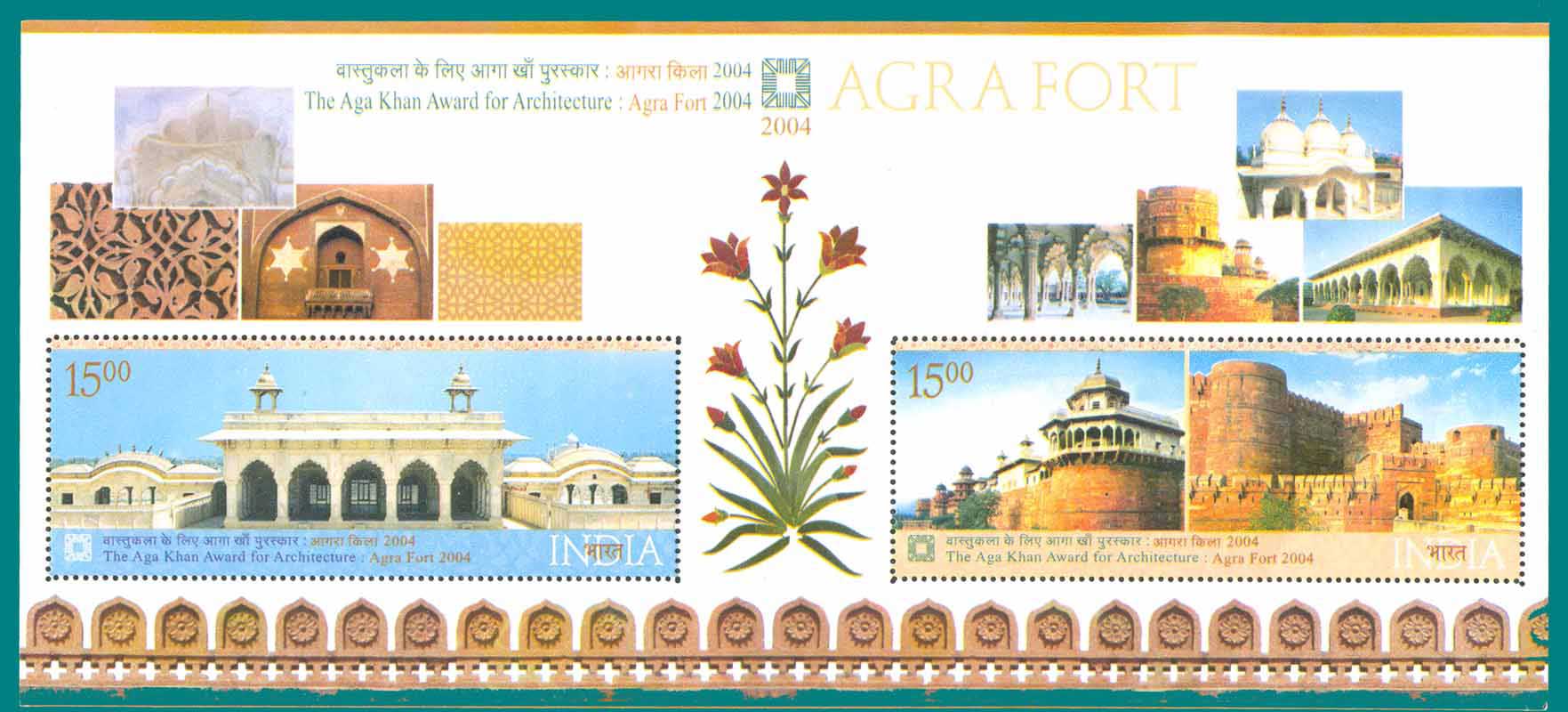

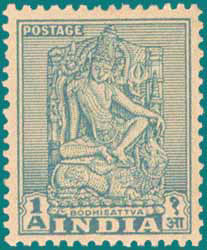
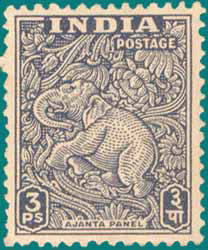

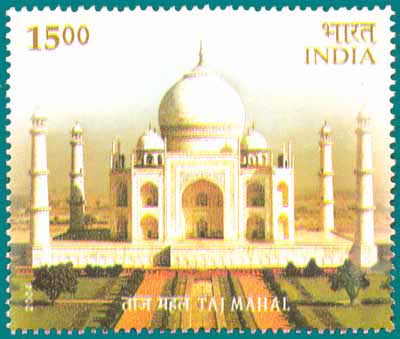
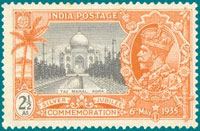
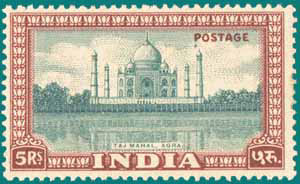
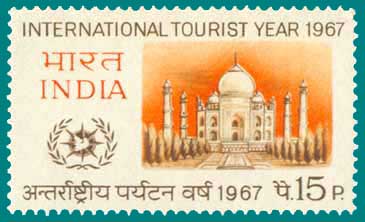
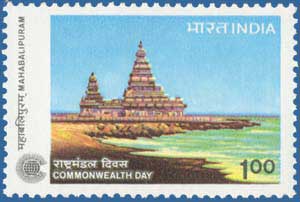
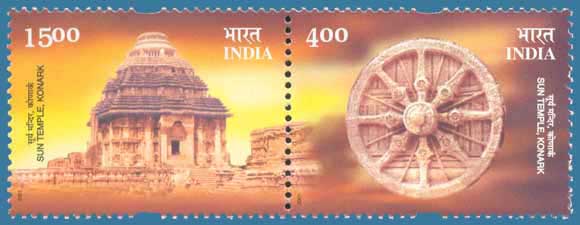
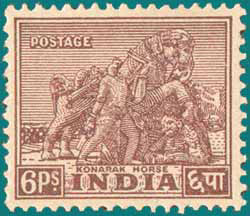
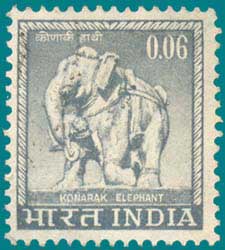
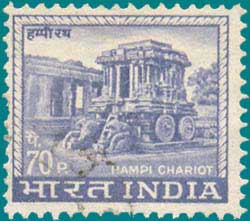 Hampi, on the southern bank of the
Tungabhadra, once formed the seat of the mighty Vijayanagara empire. The
contemporary chroniclers who came from far off countries like Arabia,
Italy, Portugal and Russia visited the empire and have left graphic and
glowing accounts of the city. Monuments were built here between AD 1336
and 1570, from the time of Harihara I to that of Sadasiva Raya. Royal
buildings were raised by Krishnadeva Raya (AD 1509-1530). Hampi covers an
area of nearly 26 sq km and is enclosed by seven lines of fortifications.
Within the innermost enclosure extensive remains of the palace are
noticed. Temples of this city are noted for their large dimensions, florid
ornamentation, bold and delicate carvings, stately pillars, magnificent
pavilions and sculptural depictions from the Ramayana and the Mahabharata.
Hampi, on the southern bank of the
Tungabhadra, once formed the seat of the mighty Vijayanagara empire. The
contemporary chroniclers who came from far off countries like Arabia,
Italy, Portugal and Russia visited the empire and have left graphic and
glowing accounts of the city. Monuments were built here between AD 1336
and 1570, from the time of Harihara I to that of Sadasiva Raya. Royal
buildings were raised by Krishnadeva Raya (AD 1509-1530). Hampi covers an
area of nearly 26 sq km and is enclosed by seven lines of fortifications.
Within the innermost enclosure extensive remains of the palace are
noticed. Temples of this city are noted for their large dimensions, florid
ornamentation, bold and delicate carvings, stately pillars, magnificent
pavilions and sculptural depictions from the Ramayana and the Mahabharata.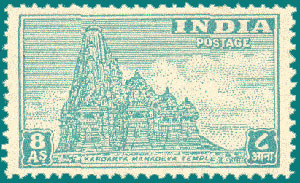

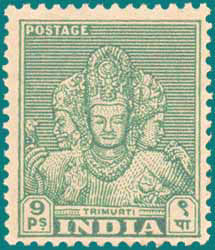 Elephanta anciently known as
Gharapuri, the island capital of Konkan Mauryas, is celebrated for its
colossal image of Mahesamurti with three heads each representing a
different form.
Elephanta anciently known as
Gharapuri, the island capital of Konkan Mauryas, is celebrated for its
colossal image of Mahesamurti with three heads each representing a
different form.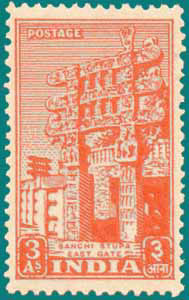
 Imposing
Stupa-1 with four gateways and railings made Sanchi a world famous
Buddhist site. The original stupa of the Asokan times was enlarged and
faced with stones.lt is decorated with balustrades, staircases and an
umbrella on top. Besides this, other stupas, monolithic Asokan pillar,
many other temples, monasteries and sculptures are found scattered at
Sanchi and its adjoining hills from the Mauryan period to the twelfth
century AD.
Imposing
Stupa-1 with four gateways and railings made Sanchi a world famous
Buddhist site. The original stupa of the Asokan times was enlarged and
faced with stones.lt is decorated with balustrades, staircases and an
umbrella on top. Besides this, other stupas, monolithic Asokan pillar,
many other temples, monasteries and sculptures are found scattered at
Sanchi and its adjoining hills from the Mauryan period to the twelfth
century AD.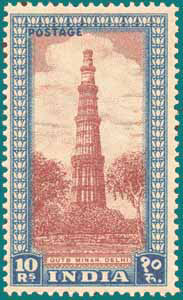
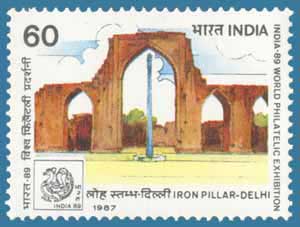 Qutb-Minar
in red and buff sandstone
is the highest tower in India. It has a diameter of 14.32m at the base and
about 2.75m on the top with a height of 72.5m.
Qutb-Minar
in red and buff sandstone
is the highest tower in India. It has a diameter of 14.32m at the base and
about 2.75m on the top with a height of 72.5m.
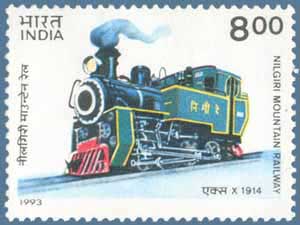
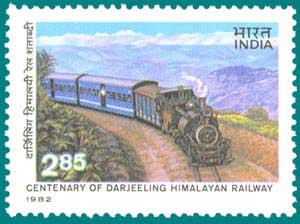
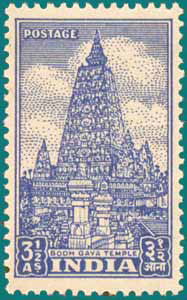
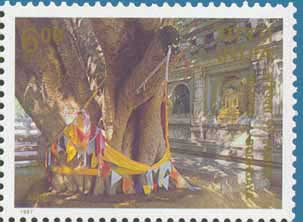
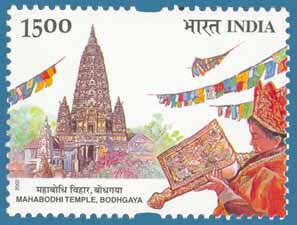
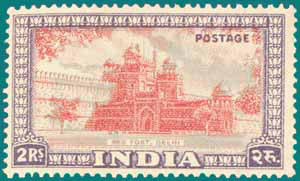
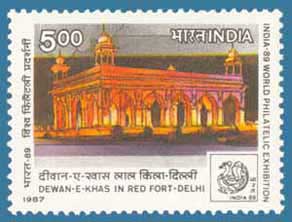 The Red Fort Complex was built as the palace fort of Shahjahanabad - the new capital of the 5th Mughal Emperor of India, Shahjahan (1628-58). It gets its name from its massive enclosing walls of red sandstone. It is adjacent to an older fort, the Salimgarh, built by Islam Shah Sur in 1546, with which it forms the Red Fort Complex. The private apartments consist of a row of pavilions connected by a continuous water channel, known as the Nahr-i-Behisht, or the Stream of Paradise. The palace was designed as an imitation of paradise as described in the Koran; a couplet inscribed in the palace reads, ‘If there be a paradise on earth, it is here, it is here'. The Red Fort is considered to represent the zenith of Mughal creativity which, under the Emperor Shahjahan, was brought to a new level of refinement. The planning of the palace is based on Islamic prototypes, but each pavilion reveals architectural elements typical of Mughal building, reflecting a fusion of Persian, Timurid and Hindu traditions The Red Fort's innovative planning and architectural style, including its garden design, strongly influenced later buildings and gardens in Rajasthan, Delhi, Agra and further afield. The monument's significance is further enhanced by the importance of events that happened. Through its fabric, the complex reflects all phases of Indian history from the Mughal period to independence.
The Red Fort Complex was built as the palace fort of Shahjahanabad - the new capital of the 5th Mughal Emperor of India, Shahjahan (1628-58). It gets its name from its massive enclosing walls of red sandstone. It is adjacent to an older fort, the Salimgarh, built by Islam Shah Sur in 1546, with which it forms the Red Fort Complex. The private apartments consist of a row of pavilions connected by a continuous water channel, known as the Nahr-i-Behisht, or the Stream of Paradise. The palace was designed as an imitation of paradise as described in the Koran; a couplet inscribed in the palace reads, ‘If there be a paradise on earth, it is here, it is here'. The Red Fort is considered to represent the zenith of Mughal creativity which, under the Emperor Shahjahan, was brought to a new level of refinement. The planning of the palace is based on Islamic prototypes, but each pavilion reveals architectural elements typical of Mughal building, reflecting a fusion of Persian, Timurid and Hindu traditions The Red Fort's innovative planning and architectural style, including its garden design, strongly influenced later buildings and gardens in Rajasthan, Delhi, Agra and further afield. The monument's significance is further enhanced by the importance of events that happened. Through its fabric, the complex reflects all phases of Indian history from the Mughal period to independence.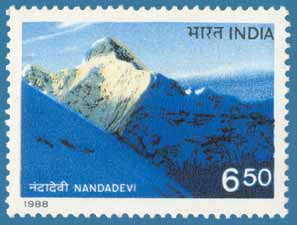 Nanda
Devi National Park is one of the most spectacular wilderness areas in the
Himalayas. It is dominated by the 7,800m peak of Nanda Devi, India’s
second highest mountain which is approached through the Rishi Ganga gorge,
one of the deepest in the world. No humans live in the Park which has
remained more or less intact because of its inaccessibility. It has a very
diverse flora and is the habitat of several endangered mammals, among them
the snow leopard, serow, Himalayan musk deer and bharal.
Nanda
Devi National Park is one of the most spectacular wilderness areas in the
Himalayas. It is dominated by the 7,800m peak of Nanda Devi, India’s
second highest mountain which is approached through the Rishi Ganga gorge,
one of the deepest in the world. No humans live in the Park which has
remained more or less intact because of its inaccessibility. It has a very
diverse flora and is the habitat of several endangered mammals, among them
the snow leopard, serow, Himalayan musk deer and bharal.